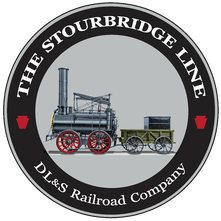Related Research Articles

LeFlore County is a county along the eastern border of the U.S state of Oklahoma. As of the 2010 census, the population was 50,384. Its county seat is Poteau. The county is part of the Fort Smith metropolitan area and the name honors a Choctaw family named LeFlore. The United States District Court for the Eastern District of Oklahoma is the federal district court with jurisdiction in LeFlore County.

Poteau is a city in, and county seat of, Le Flore County, Oklahoma, United States. The population was 8,520 as of the 2010 census.

The Virginian Railway was a Class I railroad located in Virginia and West Virginia in the United States. The VGN was created to transport high quality "smokeless" bituminous coal from southern West Virginia to port at Hampton Roads.

Cavanal Hill, located near Poteau, Oklahoma, is described by a sign at its base as the "'World's Highest Hill' – Elevation: 1,999 feet". The actual summit elevation is 2,385 feet (727 m) above sea level; the difference in elevation between the summit and the Poteau River 3 miles (5 km) to the north is 1,960 feet (600 m).

The Norfolk and Western Railway, commonly called the N&W, was a US class I railroad, formed by more than 200 railroad mergers between 1838 and 1982. It was headquartered in Roanoke, Virginia, for most of its existence. Its motto was "Precision Transportation"; it had a variety of nicknames, including "King Coal" and "British Railway of America". In 1986, N&W merged with Southern Railway to form today’s Norfolk Southern Railway.

The St. Louis–San Francisco Railway, commonly known as the "Frisco", was a railroad that operated in the Midwest and South Central United States from 1876 to April 17, 1980. At the end of 1970, it operated 4,547 miles (7,318 km) of road on 6,574 miles (10,580 km) of track, not including subsidiaries Quanah, Acme and Pacific Railway and the Alabama, Tennessee and Northern Railroad; that year, it reported 12,795 million ton-miles of revenue freight and no passengers. It was purchased and absorbed into the Burlington Northern Railroad in 1980. Despite its name, it never came close to San Francisco.
The Lehigh & New England Railroad was a Class I railroad located in Northeastern United States that acted as a bridge line. It was the second notable U.S. railroad to file for abandonment in its entirety after New York, Ontario and Western Railway.

The Stourbridge Line is a shortline railroad that operates 25 miles (40 km) of former Erie Lackawanna Railroad trackage between Honesdale and Lackawaxen, Pennsylvania where it connects with Norfolk Southern Railway. The line was previously owned by the Lackawaxen-Honesdale Shippers Association and operated under contract by Robey Railroads. The operation was contracted to the Morristown & Erie Railway in January, 2009; service ended in 2011. Service was resumed by the Delaware, Lackawaxen & Stourbridge Railroad (DL&S) on May 9, 2015.
The Fort Smith and Western Railway was a railroad that operated in the states of Arkansas and Oklahoma.

The Southern San Luis Valley Railroad is a fallen flag shortline railroad that was located in Southern Colorado. Best known in its final years of operation, it served a connection with the Denver and Rio Grande Western Railroad at Blanca, Colorado. The diminutive railroad in its final form was approximately 1.53 miles (2.46 km) in length. During its life freight traffic included farm produce, fertilizer and volcanic scoria. The railroad, as it was originally built, was 31 miles (50 km) long and besides freight it operated passenger service between Blanca and Jaroso, Colorado, until 1946. The railroad formally ceased all operations December 31, 1996.
The following is a brief history of the North American rail system, mainly through major changes to Class I railroads, the largest class by operating revenue.
The Southwestern Railroad is a Class III railroad operating since 1990, and until 2017 consisted of two unconnected railroad sections in New Mexico, with no shared functions. These and a third section in the Texas panhandle and Oklahoma, now closed, all operated separately. Since January 2017, only the Whitewater Division is operated by Southwestern.
The Okmulgee Northern Railway Company (ON), originally the Coalton Railway, was a shortline rail carrier in Okmulgee County, Oklahoma. It was in operation from 1916 to 1964.
The Clinton and Oklahoma Western Railroad was a railway in southwestern Oklahoma and the Texas Panhandle, with a mainline eventually running from Clinton, Oklahoma to Pampa, Texas, about 139 miles. The predecessor company was incorporated in 1908, and the railroad was merged out of existence in 1948.
The Miami Mineral Belt Railroad (MMBR) served the Miami and Picher lead mining areas in that portion of the Tri-state mining district located in far northeastern Oklahoma. It was closely associated with the St. Louis-San Francisco Railway (Frisco) for its entire history, and was eventually absorbed into the Frisco.
The Kingston and Choctaw Valley Railroad (K&CV) was a short-lived industrial railway serving the lumber industry in the later days of Indian Territory, in what is now Le Flore County in the State of Oklahoma. Twelve miles in length, it ran from Thomasville to rail connections at Howe.
The Allentown branch, also known as the Kutztown branch or the Kutztown industrial track, is a railway line in Pennsylvania. It runs 4 miles (6.4 km) from a junction with the Reading Line at Topton to Kutztown. The line was built in 1870 by the Allentown Railroad and was part of the Reading Company system until 1976. The Kutztown Transportation Authority has owned the line since 2000. The Allentown and Auburn Railroad is the current operator.
The Oil Fields Short Line Railroad had both a short route—about 4.4 miles between Clifford and Dilworth in Kay County, Oklahoma—and a short existence, being created in 1916 and abandoned at the end of 1923.
The Poteau Valley Railroad was a shortline running from Calhoun, Oklahoma to Shady Point, Oklahoma, encompassing 7.883 mi (12.686 km) of track. It began in 1900 and was abandoned in 1926.
Calhoun, originally called Sutter, is an unincorporated community in Le Flore County in the State of Oklahoma, approximately 7 miles northwest of Poteau, the county seat. Located about 6.5 driving miles west-southwest of Shady Point, Oklahoma, Calhoun can be reached off of US Route 59 at Shady Point by heading west on County Road D1310, then County Road 90. The town is just northwest of Cavanal Hill, which makes the eccentric boast of being the “world’s highest hill.”
References
- 1 2 3 4 5 6 "Valuation Docket No 575, Fort Smith, Poteau and Western Railroad Company, decided June 25, 1926, pp.211-221" . Retrieved March 29, 2023.
- ↑ "Le Flore County". Larry O’Dell, Oklahoma Historical Society. Retrieved November 16, 2021.
- 1 2 3 4 5 6 7 8 "Poteau and Cavanal Mountain Railroad Company" (PDF). General Counsel, Railroad Retirement Claims (accessed on GovInfo.gov). Retrieved November 16, 2021.
- ↑ "Poteau and Cavanal Mountain Railroad Company". OpenCorporates.com. Retrieved November 16, 2021.
- ↑ "Definition of semianthracite". Merriam-Webster. Retrieved January 11, 2022.
- ↑ "Witteville, Poteau, OK". Google Maps. Retrieved November 16, 2021.
- ↑ "Cavanal Hill". Poteau Chamber of Commerce. Retrieved November 16, 2021.
- ↑ "Cavanal Hill". zeugmatic.com, December 20, 2012. Retrieved November 16, 2021.